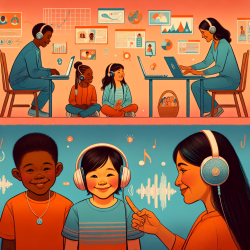Introduction
As practitioners dedicated to supporting children with Autism Spectrum Disorder (ASD), we continuously seek strategies that enhance their developmental trajectories. A recent study titled Subgroups of Children with Autism Spectrum Disorder without Intellectual Disability: A Longitudinal Examination of Executive and Socio-Adaptive Behaviors in Adolescence provides critical insights into the diverse needs of adolescents with ASD. This blog post delves into the findings of this study, offering actionable insights for practitioners to tailor interventions and improve outcomes for this population.
Understanding the Subgroups
The study identified three distinct subgroups of children with ASD without intellectual disability, based on the severity of their symptoms:
- High Severity: Characterized by significant challenges in social communication and repetitive behaviors.
- Moderate Severity: Exhibiting moderate difficulties in social communication and adaptive behaviors.
- Low Severity: Displaying fewer repetitive behaviors but notable social communication challenges.
Understanding these subgroups is crucial for practitioners as it underscores the need for personalized intervention strategies that address specific challenges faced by each subgroup.
Key Findings and Implications
The longitudinal study followed these subgroups into adolescence, revealing important trends in executive functioning (EF), social skills, and adaptive behaviors:
- All subgroups exhibited more significant difficulties in executive functioning compared to their typically developing peers. This highlights the need for targeted interventions that enhance cognitive flexibility, planning, and emotional regulation.
- Social and adaptive skills varied significantly across subgroups. Adolescents in the high severity group faced the most challenges in socialization and daily living skills, emphasizing the importance of early and intensive social skills training.
- The study also found that a greater level of initiative in executive functioning positively impacted prosocial behavior and academic adaptation, suggesting that interventions focusing on enhancing initiative could yield positive outcomes.
Practical Applications for Practitioners
Practitioners can leverage these findings to refine their approaches to supporting adolescents with ASD:
- Personalized Interventions: Tailor interventions to the specific needs of each subgroup, focusing on enhancing executive functions and social skills.
- Early and Intensive Support: Implement early interventions that focus on reducing repetitive behaviors and improving social communication to mitigate long-term challenges.
- Family and School Involvement: Engage families and schools in the intervention process to ensure a supportive environment that reinforces the skills being developed.
Encouraging Further Research
This study highlights the complexity of ASD and the necessity for continued research to explore the long-term impacts of different symptom severity profiles. Practitioners are encouraged to stay informed about the latest research and consider participating in studies that further our understanding of ASD.
To read the original research paper, please follow this link: Subgroups of Children with Autism Spectrum Disorder without Intellectual Disability: A Longitudinal Examination of Executive and Socio-Adaptive Behaviors in Adolescence.










